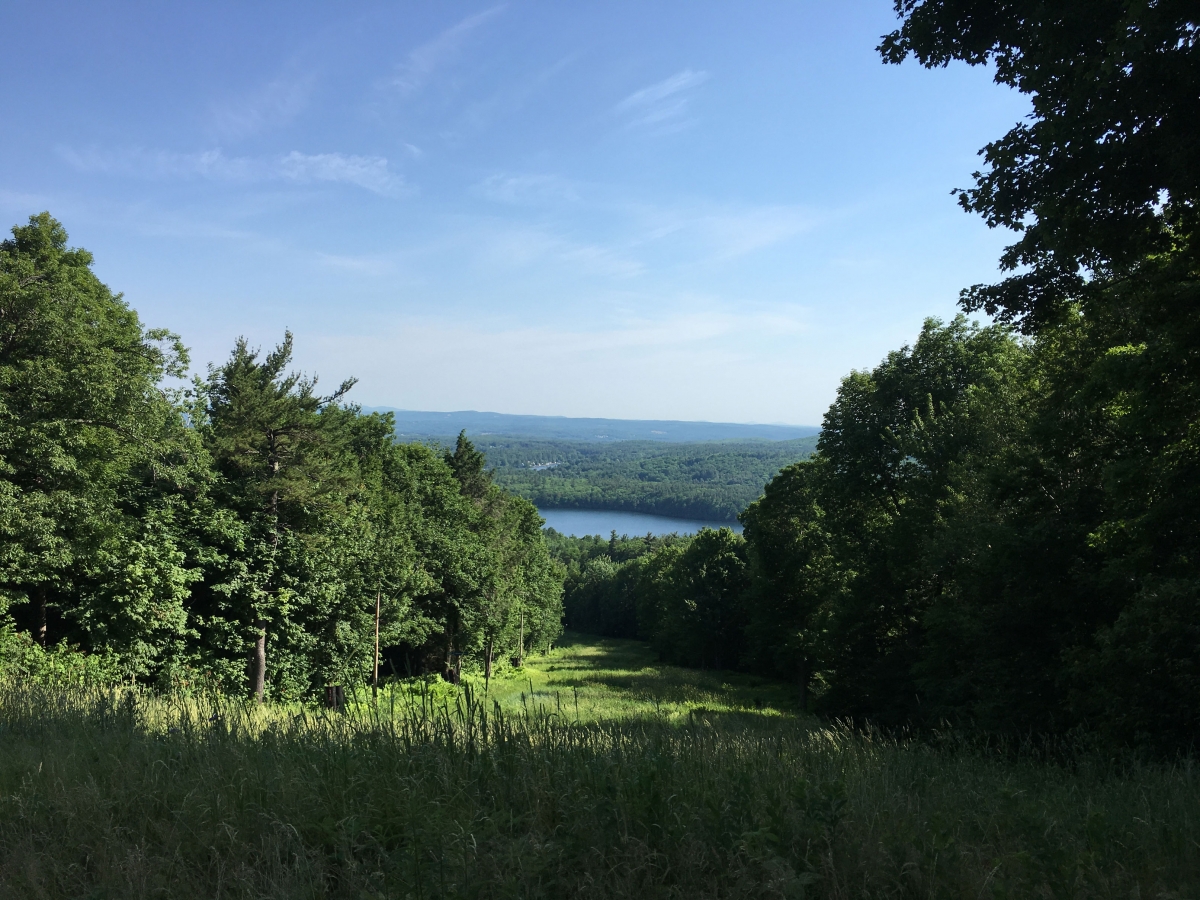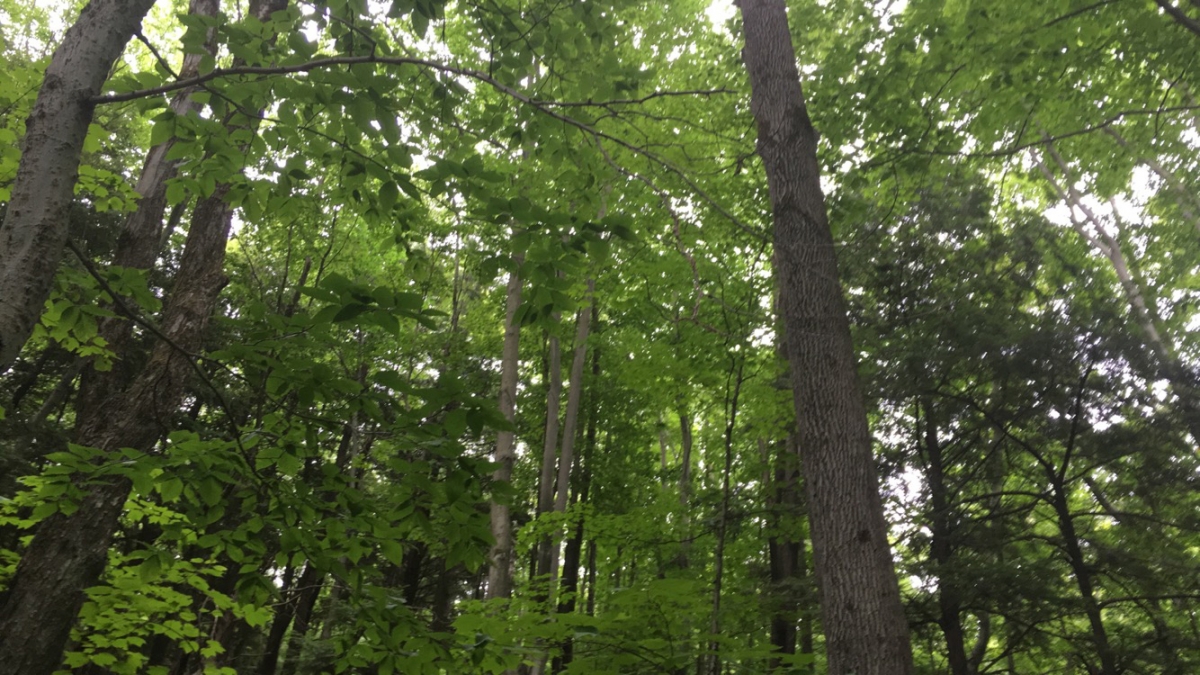You are here
Tree Rings, Disturbance, and Life under the Scope
Consider the major events that you have experienced throughout your life. Some people keep mementos and souvenirs to remember the places they have been to or take photos to look back at what they saw; others only have their memories. Trees, on the other hand, “write their stories” in their rings. The patterns that they form serve as a visual history of extreme weather, insect infestations, growth cycles, and many other details that are revealed upon closer inspection.
I will admit to being the type of person who believed that science was confined to carefully outlined experimental methods and concrete numerical data, and working with tree rings involves both of those things. However, there is so much more qualitative information that one can learn from a single tree core that might get lost between lines of hard data if it’s not picked up by someone who is looking for it. For example, many narrow rings near the center of the tree probably indicates that the tree started growth as a suppressed, slow-growing seedling, meaning that the canopy above the plant was covered by other plants growing around it. Portions of the sample that show very large rings after many narrow rings indicate what is called a “release”, or an increase in growth rate in response to the canopy opening up above it.
In my project, red oaks are cored with a tree borer as close to the bottom of the tree as possible, as well as at about one meter above the ground. Each core is stored in a labeled straw until they are extracted, mounted to dry, glued, and then tediously and lovingly sanded. Samples are visually dated by counting backwards, starting with the outermost ring as the previous year and using a system of dots to keep track of the dates:
● = 10 years ●● = 50 years ●●● = 100 years ●●●● = 1000 years
Each core is also measured and run through a statistical analysis program called Cofecha to find similar patterns among ring widths between trees. This helps to build a chronology, or a timeline of tree growth, for the red oaks in the region. Using this timeline, I'll be able to compare current growth patterns among my four sites, which have varying histories of previous natural and human disturbance. My goal is to understand how these histories continue to impact the trees so that we can try to predict the species’ future presence in those forests.
As you can imagine, the entire process of collecting, processing, and later analyzing samples like these is pretty time consuming. This has left me with plenty of time to ponder my experiences at Harvard Forest thus far while sequestered away in the sanding room or peering through the dissecting microscope. Everything about this summer has been new, exciting, sometimes overwhelming, and completely inspiring. There is so much more going on within every tree than I could have ever imagined. I never expected tree rings to look the way that they do up close. Maybe I didn’t even know what I had expected to see in the first place. After getting over that initial surprise, I was able to notice certain patterns. If there are three or four distinctly narrow rings in the middle of larger, similarly sized ones, that could indicate a drought or other damage to the tree that prevented it from growing as much.
“Zooming out” a bit, I had stressed over coming up with a concrete research question and worried about what the final paper would look like, and yet my project direction seemed to have pieced itself together little by little before my eyes over the first couple of weeks. Reflecting on my time up until this point, I couldn’t help but remember a lyric that one of my mentors, Neil Pederson, frequently used to first teach us how to cross date: “Hold on loosely but don’t let go.”
At first this phrase only referred to taking note of similar, particularly small rings that showed up in many cores from a site that could probably correlate to a specific year in their chronologies. There is always a lot of variation within tree rings just because living things rarely grow perfectly or consistently, and noting almost every other ring that may be slightly narrower than those next to it does not help single out distinct years in the tree’s growth. As I got more comfortable looking at the core through the microscope and moved a little faster, the most significantly narrow rings became easier to see and were noted consistently among the other cores as well.
These seven words came to represent much more to me. The rush that I put on myself to pick up and master new techniques at the beginning of the program probably stemmed (no pun intended) from a tendency to over-analyze my work, as if gripping too tightly on a rope so that I got rope burn. Sanding, mounting, and measuring only a few cores would take hours, and I found that mistakes would often happen when I was fussing over perfection. Only once I loosened the grip a bit and reminded myself of the bigger picture of my project was I able to climb higher. At an even broader scope, I thought that I had an idea about what this internship entailed and the things that I would see in a state I had never been to before; I was wrong yet again as these expectations, too, were exceeded.
 Along with Neil, I am also extremely grateful for my other unique and supportive mentor, David Orwig, who has managed to keep my bustling and sporadic brain levelled, and the admirably patient graduate lab member, Dan Bishop. Dave’s enthusiasm to sample in many diverse sites that we have been to was always balanced by a healthy sense of practicality so as not to bite off more than we could chew. Also, from the very start, Dan helped the other REU student in my lab, Molly, and I with absolutely any and every problem or question, small or large, that we had along the way.
Along with Neil, I am also extremely grateful for my other unique and supportive mentor, David Orwig, who has managed to keep my bustling and sporadic brain levelled, and the admirably patient graduate lab member, Dan Bishop. Dave’s enthusiasm to sample in many diverse sites that we have been to was always balanced by a healthy sense of practicality so as not to bite off more than we could chew. Also, from the very start, Dan helped the other REU student in my lab, Molly, and I with absolutely any and every problem or question, small or large, that we had along the way.
The culmination of eye-opening academic enrichment, scenic views at remote sites that only a few are lucky enough to see, and moral support from peers as well as experienced professionals is centered around a passion for dendroecology (the study of trees). From this, I learned so much about my surroundings as well as myself. Evidently, trees teach people much more than they may be looking for.








